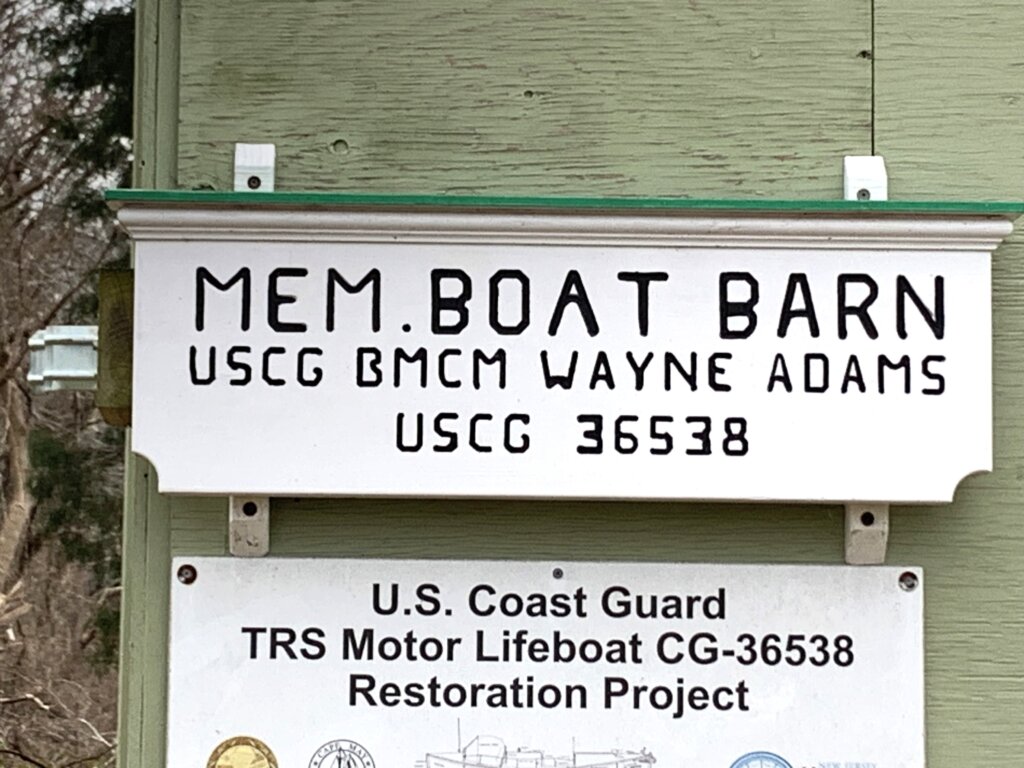ERMA – In mid-February 1952, a severe northeast storm rocked the Atlantic Ocean, causing two oil tankers, the SS Fort Mercer and the SS Pendleton, to break in half.
The wreck of the Fort Mercer, and the rescue of four of its nine crewmen trapped in the bow and all those in the stern, was overshadowed by the rescue of 32 men from the stern of the Pendleton by a four-man crew on U.S. Coast Guard Motor Lifeboat 36500.
CG-36500 was featured in the 2016 film “The Finest Hours,” about what is still considered the Coast Guard’s most daring small-boat rescue.
Now, under the auspices of the Cape May Maritime Museum, the restoration of a boat of the same make and vintage as the CG-36500 – and that worked out of Station Egg Harbor during its active days – is nearing completion.
The Maritime Museum plans to have the boat, which will be fully powered and operational, available to the public sometime after its motor is installed, scheduled for early spring. The museum is looking for sites to display the boat during the summer; after that, the Naval Air Station Wildwood Museum will keep the lifeboat displayed indoors in the museum hangar.
The rescue story involving its famed sister boat began when Station Chatham, Massachusetts, picked up the image of the Pendleton’s stern section on its radar screen. Coxswain Bernard Webber was ordered to assemble a full crew, which consisted of him and three others, to head out and rescue whomever they could from the Pendleton.
Webber piloted CG-36500 into 60-foot waves and ended up losing his compass, which had not been fastened in place properly. Continuing into the storm, by luck or providence he managed to come upon the stern of the Pendleton, which the crew managed to run aground on a shoal.
They loaded 32 men aboard a lifeboat meant to handle no more than 12 and brought them back to shore, with Webber navigating using the storm as a guide. They lost no crew members and none of those they rescued.
Around 2010, as efforts were being made to create the Cape May Maritime Museum, its nonprofit foundation was offered the sister boat. Designated the CG-36538, the motorized lifeboat was found rotting in a facility in Maryland.
It was shipped to Cape May and placed on a trailer in a marina parking lot for a while before being moved to the Cape May County Airport. Kevin Maloney was the president of the Cape May Maritime Museum in those days, and although he ended up moving out of the area, he left a legacy that was embraced by people such as Jerry Tarrant and Wayne Adams.
Adams, Tarrant said, lived in Lower Township and had previously been in the Coast Guard; he was in charge of Station Ocean City.
Tarrant said CG-36538 was stored at the Coast Guard’s Station Cape May for a while, but the Coast Guard needed the space. So for a year, the foundation housed it in a garage it constructed on Adams’ property in Lower Township, and the 20-ton boat had a home while the restoration work was going on.
Tarrant said Adams, until he died in 2022, would educate those working on the restoration about the boat and about motor lifeboats in general. The 36-foot lifeboat has a 2,000-pound keel, which helps it to be a self-righting vessel, meaning if it were to capsize it was designed to turn right side up. The lifeboat was also self-bailing, so any water that came over the sides would run back out into the sea.

Tarrant said there was a bigger rescue boat available, a 44-footer, but if it rolled it would lose its electricity. The 36-foot motor lifeboats, he said, were more dependable, and the Coast Guard never lost one of these boats.
“They are underrated,” he said.
The crew that has been refurbishing CG-36538 has made so much progress that the museum plans to move it out of the garage on April 1 and transport it to Eckel’s Marine Diesel in Rio Grande, where the motor will be installed. The Maritime Museum has received a diesel engine similar to what would have been in the boat, and has been getting it ready.
Tarrant said there are only a few of these motorized lifeboats, which were built in the late 1940s, that remain, such as one at the Hull Lifesaving Museum in Massachusetts. Hull is the museum for the U.S. Lifesaving Association, the forerunner of the Coast Guard.
He said the CG-36500, used in the 1952 Pendleton rescue, has been in the possession of the Orleans, Massachusetts, Historical Society, which recently announced the boat would be taken out of the water after serving for more than 40 years as a floating museum.
Tarrant said there also are lifeboats at maritime museums in Maine and Michigan, and one at the Coast Guard Motor Lifeboat Training Center, located near the mouth of the Columbia River at Cape Disappointment, just outside of Ilwaco, Washington.
He said there are currently no plans to have a brick-and-mortar maritime museum. He said CG-36538 will be a sort of floating museum, on which the group has focused its energies at this time.
Tarrant said that, besides acquiring a new motor for the boat, sections of the hull were restored with cypress, the same kind of wood used when it was originally constructed.
“The Coast Guard Chiefs Association donated the money for the cypress,” he said.

The Cape May Maritime Museum has also partnered with the four U.S. Coast Guard auxiliary stations in Cape May County, Mystic, Connecticut, Seaport Museum, the Orleans Historical Society, Michigan Maritime Museum, Hull Lifesaving Museum, Maine Maritime Museum and Cape May MAC.
Those who would like to “Help Float the Boat” can visit www.cmmaritime.org or contact jerry@cmcmaritime.org. Donations are accepted via check at Cape May Maritime Museum, PO Box 365, Cape May, NJ 08204.
Contact the author, Christopher South, at csouth@cmcherald.com or 609-886-8600, ext. 128.









